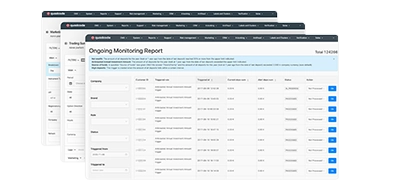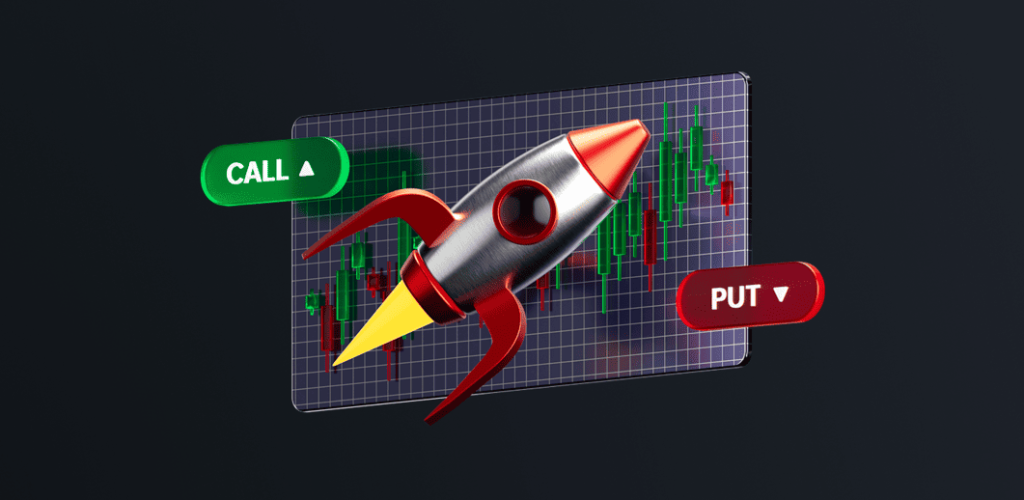Voltar
Contents
Média Móvel Suavizada: Explicado


Demetris Makrides
Senior Business Development Manager

Vitaly Makarenko
Chief Commercial Officer
A Média Móvel Suavizada (SMMA) é um indicador técnico que fornece sinais de tendência mais limpos ao reduzir o ruído do mercado através da ponderação de dados históricos mais longos. A SMMA é diferente das médias móveis tradicionais, pois considera todos os dados de preços disponíveis e também atribui a preços atuais a mesma importância que os preços anteriores. Isso produz linhas de tendência mais suaves para que você identifique a direção do mercado com menos sinais falsos.
Isso torna o SMMA particularmente valioso para detentores de posições e traders de curto prazo que precisam de uma confirmação de tendência confiável sem a instabilidade de indicadores de curto prazo. Neste guia, você descobrirá como o SMMA funciona, quando usá-lo de forma eficaz e onde ele se posiciona entre outras médias móveis em seu arsenal de negociação.
O que é uma Média Móvel Suavizada?
Uma Média Móvel Suavizada é um tipo avançado de média móvel exponencial que dá mais peso à análise de tendências de longo prazo do que ao movimento de preços de curto prazo. A Média Móvel Suavizada leva mais tempo para calcular a média, o que coloca um peso nos dados de preço à medida que a média é calculada. Assim, os dados de preço mais antigos na Média Móvel Suavizada nunca são omitidos, mas exercem uma influência muito mínima sobre a Média Móvel.
Algumas das principais características do SMMA são:
- Memória estendida: Ao contrário das médias móveis simples que descartam dados antigos, o SMMA retém todas as informações históricas
- Redução de atraso: Apesar de usar mais dados, o SMMA responde mais rápido do que os indicadores tradicionais
- Filtragem de ruído: Suaviza pequenos movimentos de preços enquanto preserva mudanças significativas de tendência
- Ponderação consistente: Preços recentes e históricos recebem consideração equilibrada
O indicador funciona bem em mercados em tendência onde você prefere uma forte inclinação direcional sem ser afetado por múltiplas reversões de sinal. Traders profissionais gostam do SMMA porque ele permite que a integridade da tendência seja mantida durante períodos de maior volatilidade.
Como Funciona a Média Móvel Suavizada
O cálculo da SMMA difere de outras médias móveis na medida em que emprega uma fórmula recursiva, baseando-se em valores previamente definidos. A matemática por trás dela garante que todos os pontos de preço em seu conjunto de dados estejam contribuindo para a leitura atual, criando uma análise de tendência abrangente.
O processo de cálculo do SMMA:
Primeiro valor do SMMA: SMMA₁ = (Soma dos preços de fechamento para N períodos) ÷ N
Valores SMMA subsequentes: SMMA = (SMMA₋₁ × (N-1) + Fechamento Atual) ÷ N
Onde:
- SMMA₋₁ = Valor anterior do SMMA
- N = Comprimento do período selecionado
- Fechamento Atual = Último preço de fechamento
Esta fórmula garante que dados mais antigos sejam nunca completamente descartados, ao contrário da SMA, resultando em uma linha significativamente mais suave.
Exemplo de cálculo passo a passo com SMMA de 5 períodos:
- Calcule a SMA inicial para os primeiros 5 períodos: (P₁ + P₂ + P₃ + P₄ + P₅) ÷ 5
- Para o período 6: SMMA₆ = (SMMA₅ × 4 + P₆) ÷ 5
- Continue o padrão: Cada novo valor usa 80% do SMMA anterior + 20% do preço atual.
Essa abordagem recursiva significa que sua SMMA se adapta gradualmente às mudanças de preço enquanto mantém o contexto histórico. O sistema de ponderação previne saltos repentinos que afligem outros indicadores durante períodos voláteis.
Média Móvel Suavizada vs Média Móvel Simples
Entender as diferenças entre SMMA e Média Móvel Simples (SMA) ajuda você a escolher a ferramenta certa para sua estratégia de trading. Embora ambos os indicadores acompanhem tendências, suas abordagens e resultados variam significativamente.
Tabela de Comparação:
| Recurso | Média Móvel Suavizada | Média Móvel Simples |
| Uso de Dados | Todos os dados históricos disponíveis | Apenas período fixo |
| Ponderação | Ponderação decrescente para dados mais antigos | Ponderação igual para todos os períodos |
| Responsividade | Abordagem moderada e equilibrada | Mais lenta, mais estável |
| Qualidade do Sinal | Menos sinais falsos | Reversões mais frequentes |
| Melhor Para | Análise de tendências de longo prazo | Reconhecimento de padrões de curto prazo |
Principais Diferenças:
- Sincronização de Sinais: SMA fornece sinais de reversão anteriores, mas gera mais falsos positivos durante mercados laterais. SMMA filtra o ruído do mercado, proporcionando confirmações de tendência mais tardias, mas mais confiáveis. Este compromisso entre precisão e velocidade determina quando cada indicador é mais valioso para você.
- Estabilidade da Tendência: A diferença mais importante entre uma média móvel suavizada e uma média móvel simples é que uma média móvel simples considera apenas os dados mais recentes, enquanto uma média móvel suavizada leva em conta a média dos últimos vários pontos de dados. Essa contabilização mais longa cria linhas de tendência mais estáveis que não oscilam durante períodos de volatilidade.
- Adaptabilidade do Mercado: SMA se ajusta rapidamente às novas condições de mercado, tornando-a adequada para estratégias de day trading e scalping. SMMA retém a direção da tendência por mais tempo, o que se adequa a estratégias de swing trading e position trading, onde você prefere confirmação em vez de entradas rápidas.
Quando Usar Cada Um:
Escolha SMMA quando:
• Negociação de prazos mais longos (4H, Diário, Semanal)
• Buscando confirmação de tendência com ruído mínimo
• Gerenciando posições através de períodos voláteis
• Combinando com indicadores de momentum
Escolha SMA quando:
• Estratégias de day trading ou scalping
• Precisa de sinais rápidos de reversão de tendência
• Padrões de rompimento de negociação
• Trabalhando com prazos mais curtos (1M, 5M, 15M)
Estratégias de Negociação com Média Móvel Suavizada
SMMA oferece aplicações versáteis em diferentes abordagens de negociação, desde a seguimento de tendências até a identificação de suportes e resistências. Compreender essas estratégias ajuda você a integrar o SMMA de forma eficaz em seu sistema de negociação.
Estratégia de Identificação de Tendências:
A aplicação principal do SMMA envolve a determinação da direção do mercado através da análise de inclinação. Quando o SMMA sobe, isso confirma a força da tendência de alta; um SMMA em declínio sugere um momento descendente. Essa abordagem funciona melhor em prazos mais longos, onde as tendências se desenvolvem ao longo de dias ou semanas, em vez de minutos.
Relação de Preço-SMMA Trading:
- Sinais de alta: Preço fecha acima da SMMA ascendente
- Sinais de baixa: O preço fecha abaixo do SMMA em queda
- Zonas neutras: O preço oscila em torno da SMMA plana
Níveis de Suporte e Resistência:
A SMMA frequentemente atua como suporte dinâmico durante tendências de alta e resistência durante tendências de baixa. Traders profissionais usam os rebotes da SMMA como oportunidades de entrada, colocando stops logo além da linha do indicador. Essa abordagem oferece uma clara gestão de risco enquanto captura movimentos de continuação de tendência.
Análise de Múltiplos Tempos:
Combine diferentes SMMAs de períodos diferentes para criar uma análise de tendência abrangente:
- SMMA Rápido (20 períodos): Momento de curto prazo
- Média SMMA (50 períodos): Tendência intermediária
- SMMA lento (período de 100): Direção de longo prazo
Quando os três estão alinhados na mesma direção, a força da tendência aumenta significativamente. Os cruzamentos entre diferentes períodos de SMMAs geram sinais de entrada e saída com níveis de sensibilidade variados.
Técnicas de Entrada e Saída:
• Entradas longas: Retração de preço para SMMA em alta com confirmação de alta
• Entradas curtas: Rejeição de preço na SMMA em queda com momento bearish
• Saídas: Mudança de inclinação SMMA ou sinal em período de tempo oposto
Vantagens e Limitações da Média Móvel Suavizada
Cada indicador técnico vem com forças e fraquezas que determinam sua eficácia sob diferentes condições de mercado. O SMMA se destaca em cenários específicos, enquanto enfrenta dificuldades em outros.
Principais Vantagens:
- Redução de Ruído Aprimorada: A consideração de dados estendida da SMMA elimina muitos dos movimentos de preço aleatórios aos quais os indicadores de períodos mais curtos estão sujeitos. Nesse sentido, é particularmente valiosa em mercados barulhentos onde outras médias móveis geram um grande número de sinais falsos.
- Persistência da Tendência: Uma vez que a SMMA determina a direção, ela mantém o viés por mais tempo do que outras opções. Essa persistência mantém você na posição durante tendências lucrativas sem saídas prematuras em correções menores.
- Contexto Histórico: Ao contrário dos indicadores que desconsideram dados mais antigos, o SMMA incorpora o histórico completo de preços. Essa abordagem fornece contexto para a ação atual do mercado e permite a identificação de quando as tendências realmente mudam em vez de flutuações temporárias.
- Mitigação de Sinais Falsos: Ao priorizar a suavidade, o SMMA sacrifica inerentemente alguma velocidade para reduzir a frequência de sinais falsos (whipsaws) comuns em indicadores mais rápidos, como o EMA, em mercados laterais. Esta é uma troca vital, pois estratégias com alta frequência de sinais falsos (por exemplo, até 57-76% para certas configurações de cruzamento de médias móveis, conforme encontrado em backtests do S&P 500) levam a quedas significativas devido a custos de transação e pequenas perdas.
Limitações Notáveis:
- Atraso de Sinal: A desvantagem da força de redução de ruído do SMMA é sua fraqueza em responsividade. Quando o SMMA confirma mudanças de tendência, movimentos substanciais já podem estar em andamento. Esse atraso pode reduzir o potencial de lucro, especialmente em mercados de rápida movimentação.
- Vulnerabilidade Whipsaw: Durante reversões genuínas de tendência, o SMMA pode gerar sinais conflitantes enquanto se ajusta gradualmente às novas condições de mercado. Vários começos falsos podem afetar os traders antes que uma direção se torne clara.
- Desempenho Ruim em Mercados Laterais: O SMMA apresenta um desempenho ruim quando os preços oscilam lateralmente sem tendência. O indicador pode oscilar em torno do movimento dos preços sem produzir sinais negociáveis, levando a tentativas de negociação frustrantes.
Além disso, estudos em larga escala de regras de análise técnica (usando milhares de regras de negociação) mostram que muitas estratégias baseadas em regras técnicas têm dificuldades em testes fora da amostra. Isso indica que você deve usar filtros ou combinar indicadores para evitar o overfitting. Estudos mostram que adicionar faixas de filtro (exigindo que o preço cruze uma margem afastada da média) pode reduzir sinais falsos, embora não os elimine completamente.
Avaliação das Condições de Mercado:
SMMA se destaca quando:
- Condições de tendência forte existem
- A volatilidade cria ruído em outros indicadores
- É necessário um gerenciamento de posição a longo prazo
- Busca-se o alinhamento de múltiplos períodos de tempo
Evite SMMA durante:
- Períodos de intervalo apertado ou consolidação
- Estratégias de negociação de alta frequência
- Mercados que requerem uma resposta imediata de sinal
- Ambientes de baixa volatilidade com tendências mínimas
Melhores Práticas e Configurações para Média Móvel Suavizada
Otimizar o SMMA requer entender como diferentes configurações afetam o desempenho em várias condições de mercado e estilos de negociação.
Diretrizes de Seleção de Período:
SMMA de curto prazo (10-20 períodos): Fornece sinais mais rápidos com maior sensibilidade a mudanças de preço. Adequado para negociação intraday e identificação rápida de tendências. No entanto, espere mais falsos sinais durante períodos voláteis.
SMMA de médio prazo (21-50 períodos): Equilibra reatividade com confiabilidade. Configuração mais versátil para negociação de swing e gerenciamento de posições de médio prazo. Funciona bem em diferentes intervalos de tempo e condições de mercado.
SMMA de longo prazo (50+ períodos): Oferece máxima estabilidade de tendência com sinais falsos mínimos. Ideal para negociação de posição e identificação de tendências principais. A geração de sinais mais lenta requer paciência, mas melhora a precisão.
Estratégias de Combinação:
Sistema Dual SMMA: Use SMMA rápido (20) e SMMA lento (50) juntos. Cruzamentos de SMMA rápido acima do sinal de SMMA lento indicam o início de uma tendência de alta. Essa abordagem reduz as limitações de um único indicador enquanto mantém os benefícios do SMMA.
SMMA com Confirmação de Volume: Combine sinais de SMMA com análise de volume. Tendências fortes geralmente mostram aumento de volume durante as mudanças de direção do SMMA. Volume fraco durante os sinais de SMMA sugere possíveis falsos rompimentos.
Recomendações para Configuração da Plataforma:
- Aplicar SMMA aos preços de fechamento para consistência
- Use cores contrastantes (azul para tendência de alta, vermelho para tendência de baixa)
- Defina notificações de alerta para mudanças na inclinação do SMMA
- Monitore múltiplos períodos de tempo simultaneamente
Erros Comuns de Implementação:
- Confiar excessivamente no SMMA sem um contexto de mercado
- Ignorando a confirmação de volume
- Usando períodos inadequados para o estilo de negociação
- Aguardando sinais imediatos em mercados laterais
A partir da nossa experiência em várias contas de swing trading, o SMMA provou ser inestimável como um filtro de tendência de longo prazo para ativos altamente voláteis, como criptomoedas e algumas ações de crescimento selecionadas. Por exemplo, em 2023, ao acompanhar uma ação de tecnologia de média capitalização, o EMA de 50 períodos produziu oito sinais de venda falsos durante uma fase de consolidação de quatro meses, oscilando de forma selvagem com picos de preço curtos.
Durante o mesmo período, o SMMA de 50 períodos permaneceu estável ou ligeiramente altista, gerando zero sinais de venda falsos e filtrando com sucesso o ruído do mercado. Usamos o SMMA como uma regra estrita: somente faça entradas longas se o preço estiver acima do SMMA de 50 períodos. Este simples mecanismo de filtragem impediu seis operações com prejuízo dos sinais erráticos do EMA, confirmando a superior estabilidade do SMMA para definir a verdadeira direção da tendência subjacente, mesmo quando sua resposta mais lenta levou a pontos de entrada/saída ligeiramente atrasados.
Conclusão
A Média Móvel Suavizada oferece aos traders uma detecção de tendência precisa por meio de sua maneira proprietária de ponderar os dados de preços e referir-se à história. Embora a SMMA possa não ser a mais rápida com seus sinais, suas propriedades de redução de ruído e integridade da tendência a tornam muito útil para a gestão de posições e estratégias de negociação de longo prazo. A rentabilidade com a SMMA é alcançada ao entender suas limitações em mercados laterais e aproveitar sua utilidade em mercados em tendência.
FAQ
A seleção de períodos depende do seu estilo de negociação. Day traders geralmente usam de 10 a 20 períodos, swing traders preferem de 21 a 50 períodos, enquanto position traders costumam escolher de 50 a 100 períodos. Teste diferentes configurações em seus intervalos de tempo preferidos para encontrar o desempenho ideal.
Sim, mas o SMMA funciona melhor para operações de swing e de posição devido às suas características de suavização. Os day traders podem achar os sinais do SMMA muito lentos, embora possa fornecer um contexto valioso de tendência quando combinado com indicadores mais rápidos.
SMMA usa todos os dados anteriores com pesos reduzidos, enquanto EMA dá mais peso aos preços recentes. SMMA produz linhas mais suaves com menos sinais falsos, mas uma reação mais lenta ao movimento dos preços, enquanto EMA responde mais rapidamente ao movimento dos preços.
Nenhum indicador técnico deve ser usado isoladamente. Combine SMMA com análise de volume, linhas de suporte/resistência e indicadores de momentum para ter uma visão completa do mercado. Vários indicadores melhoram a confiabilidade dos sinais.
SMMA é projetado para preferir a estabilidade da tendência em vez da responsividade. O atraso é intencional para filtrar o ruído do mercado e sinais falsos. O compromisso é que você pode sacrificar algum lucro potencial em troca de uma maior confiabilidade do sinal.
SMMA tem um desempenho melhor em mercados em tendência de qualquer classe de ativos, seja forex, ações, commodities ou criptomoedas. O indicador tem um desempenho ruim em faixas estreitas ou condições muito voláteis, independentemente do tipo de mercado.
Atualizado:
9 de outubro de 2025




